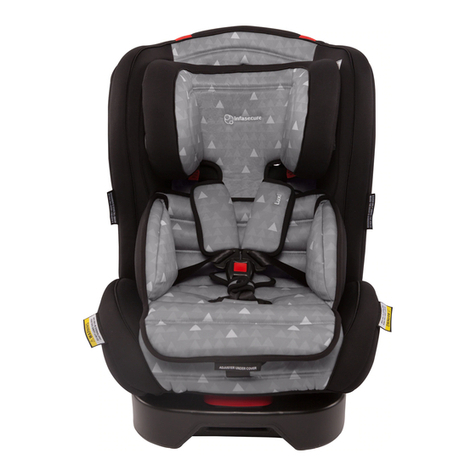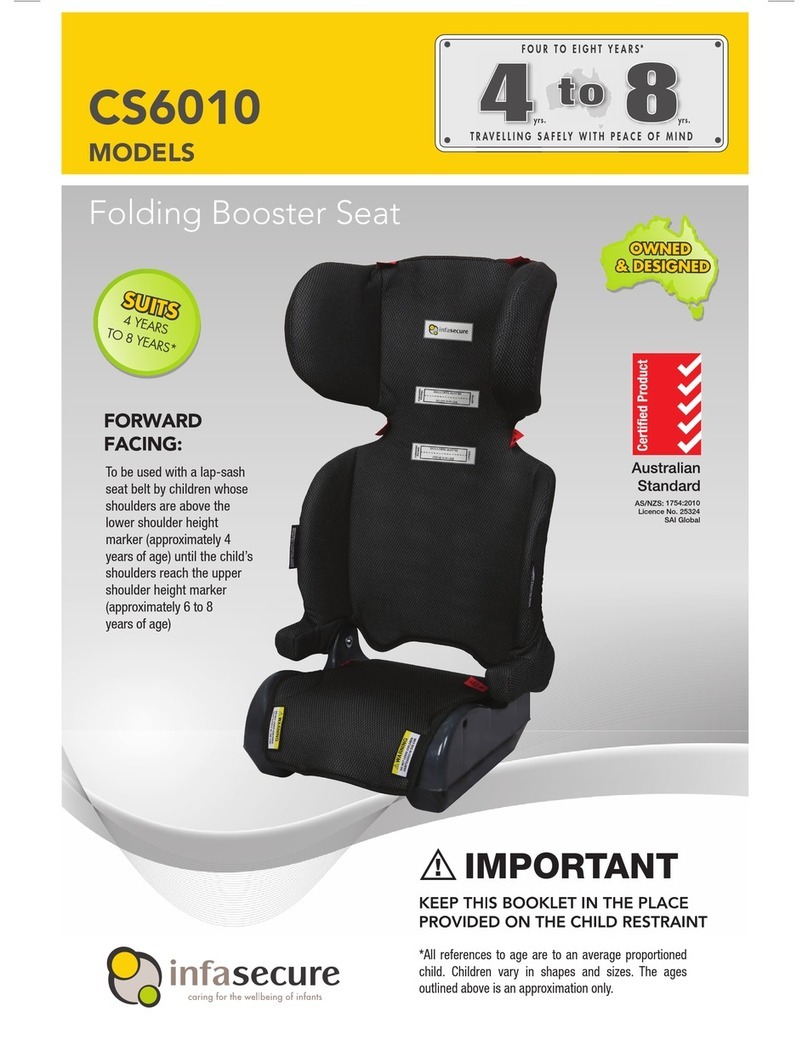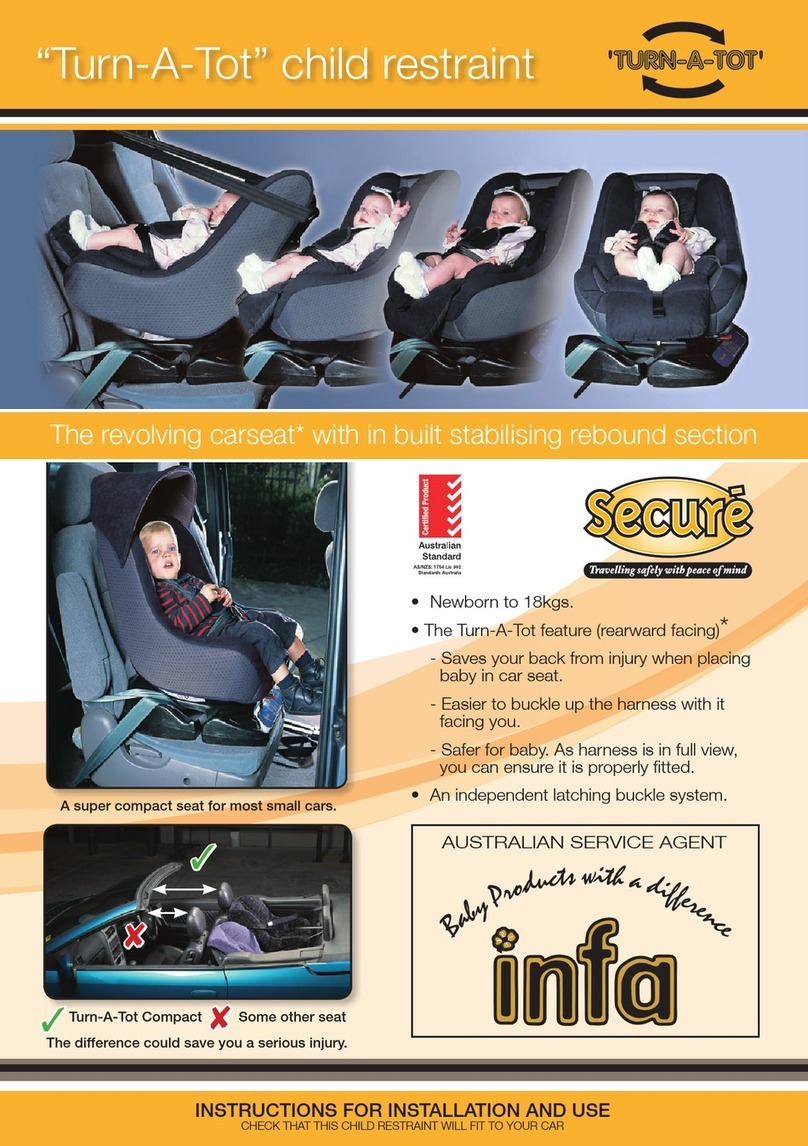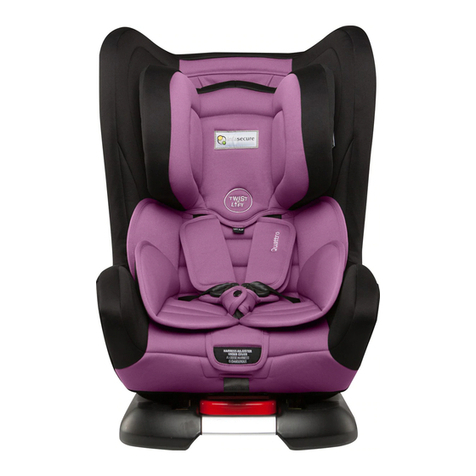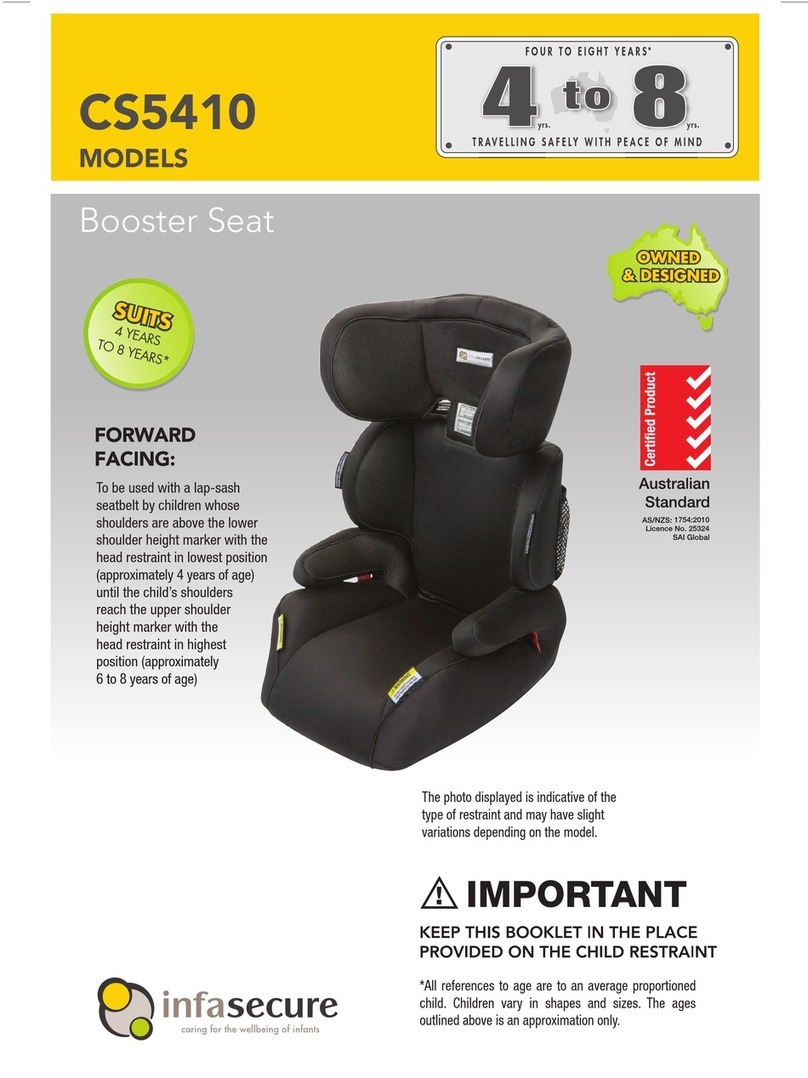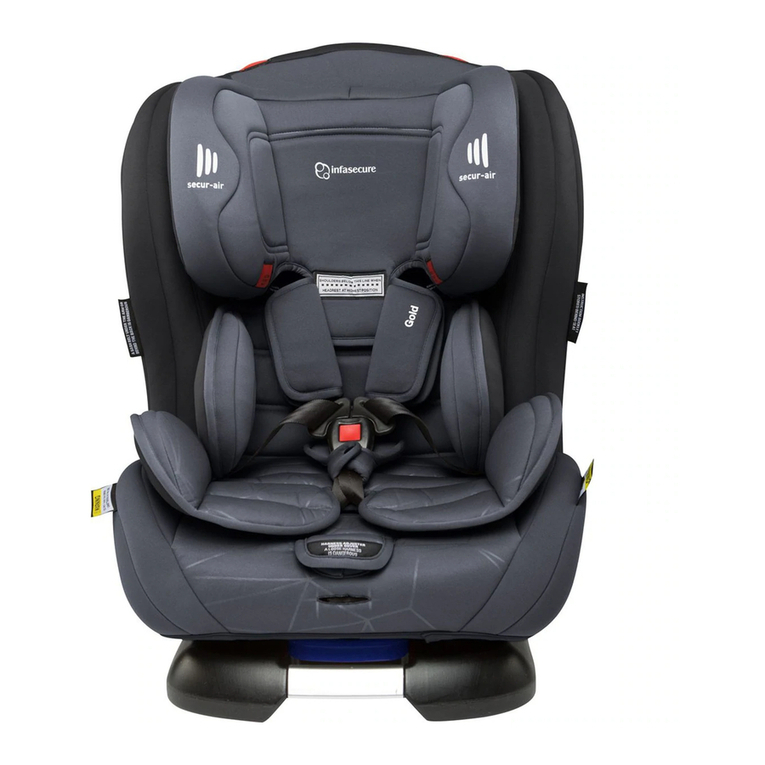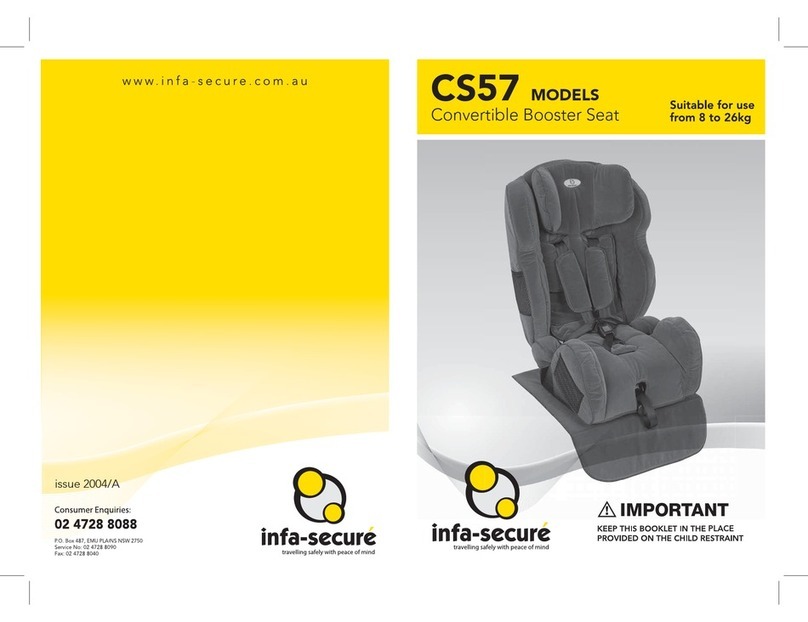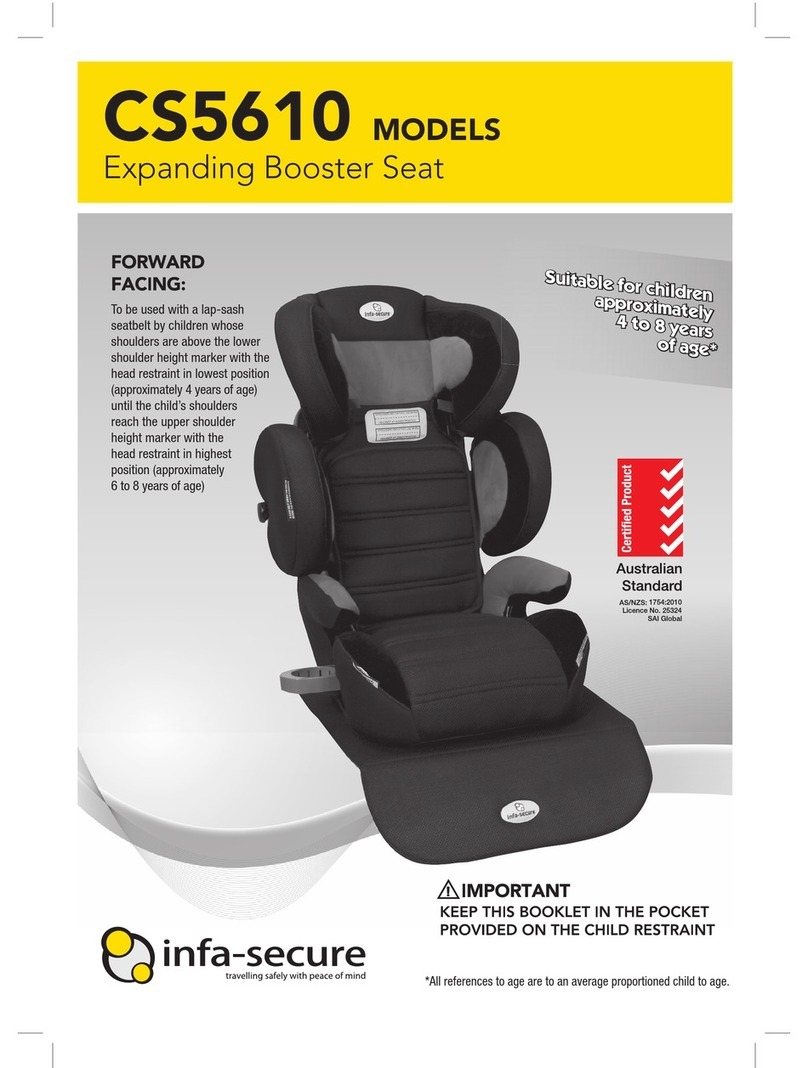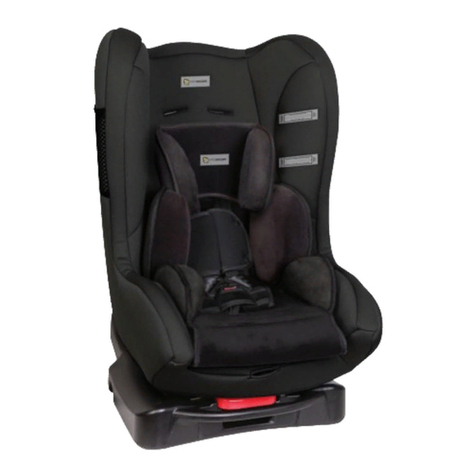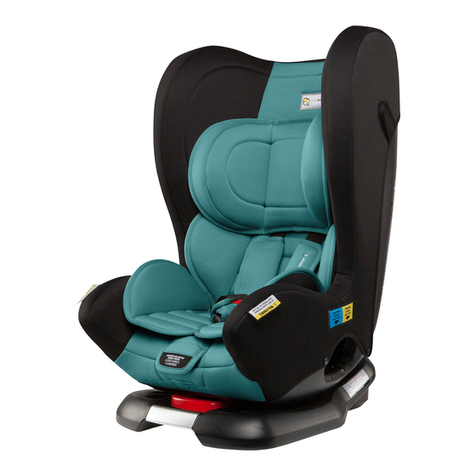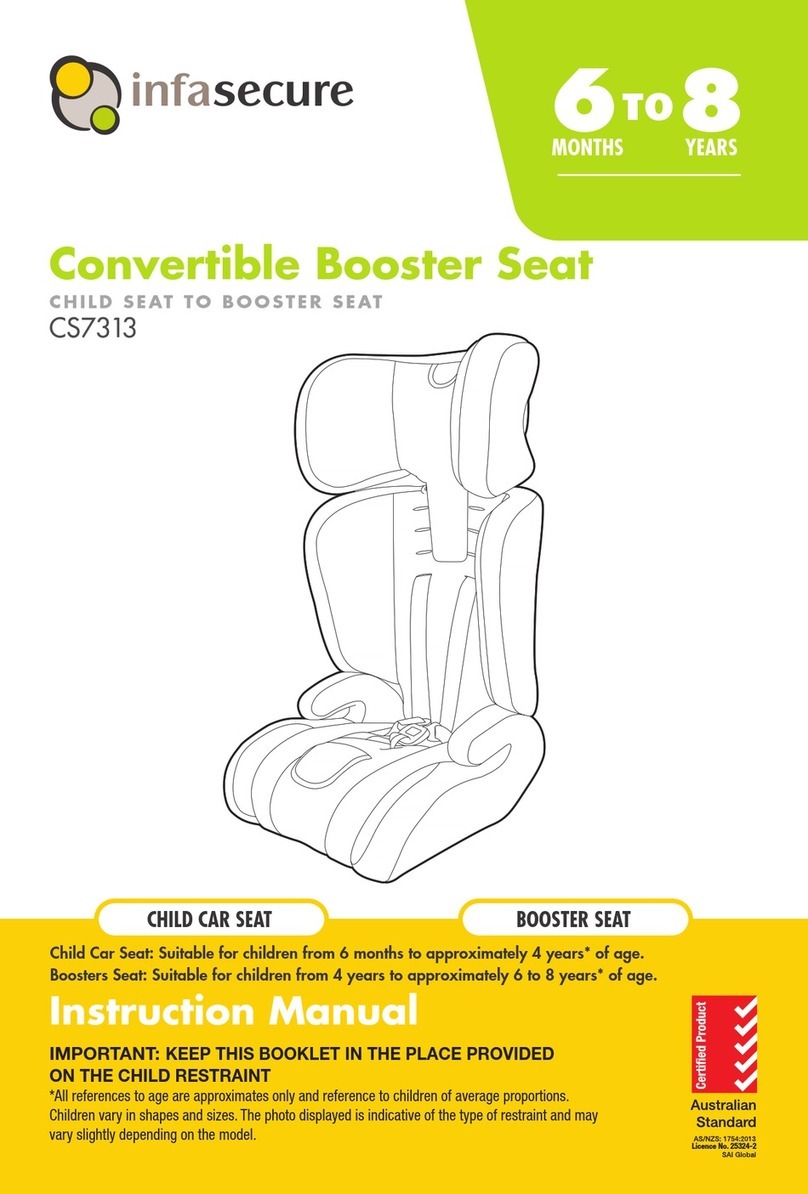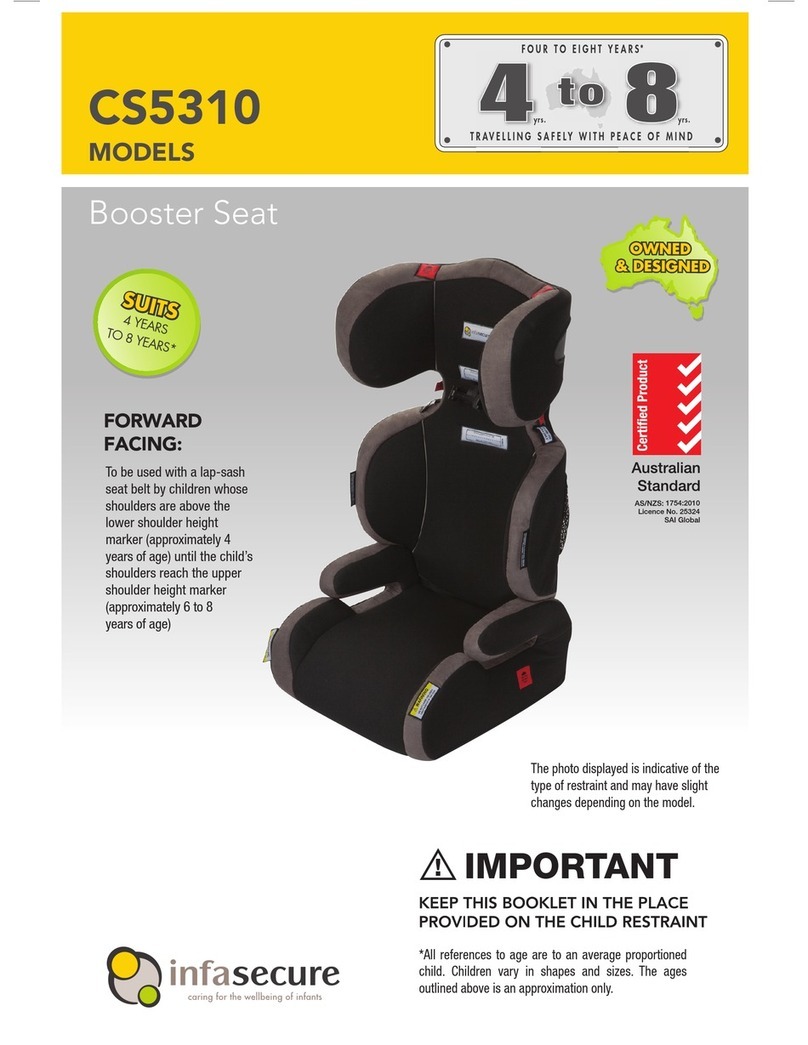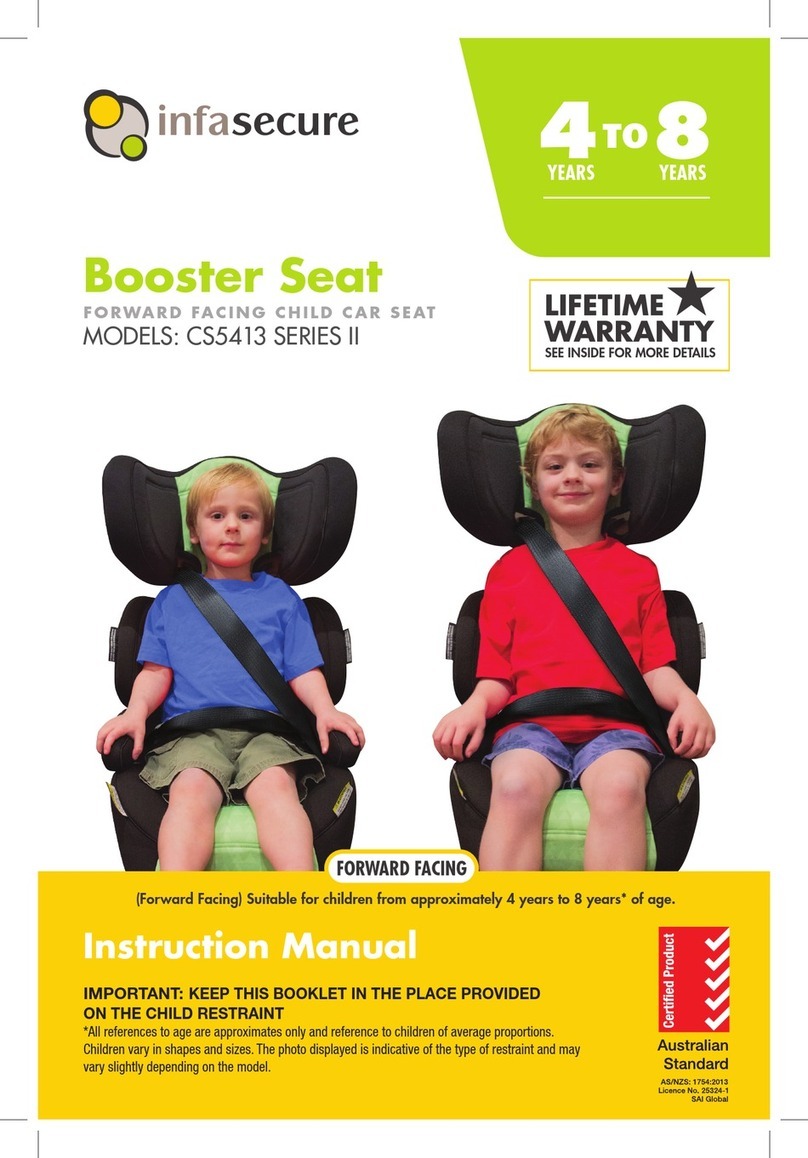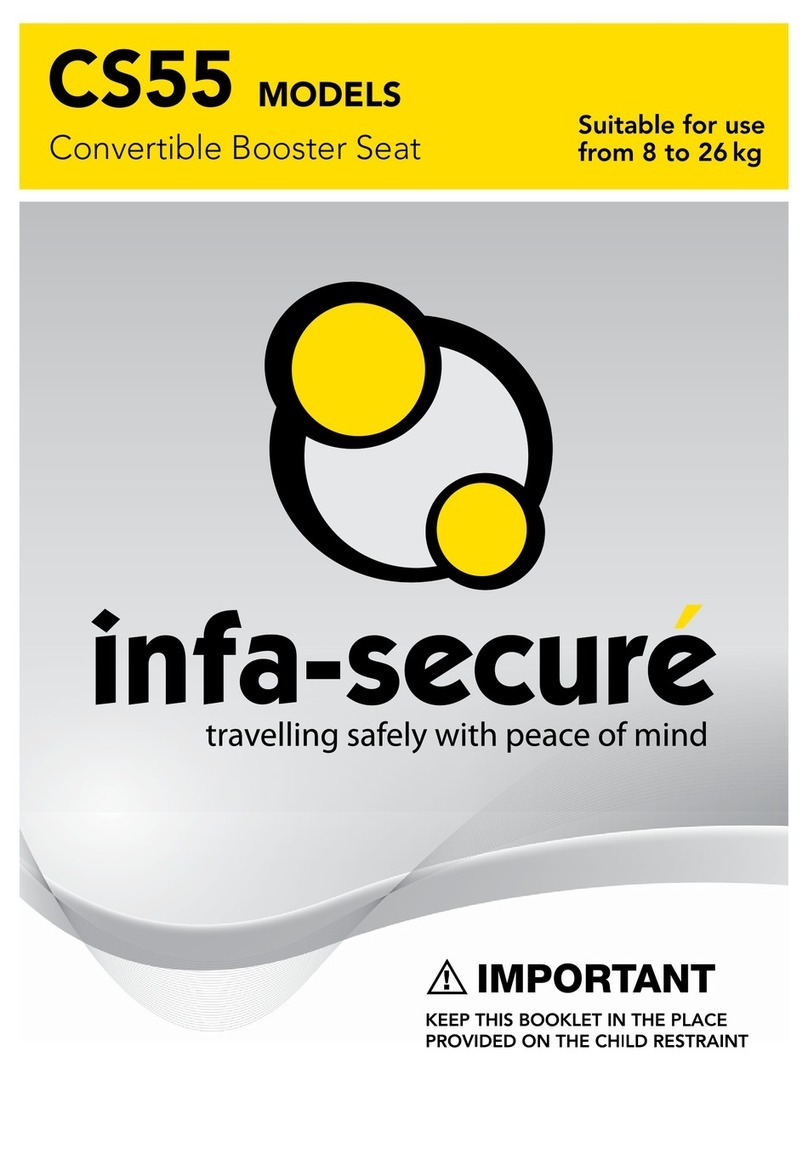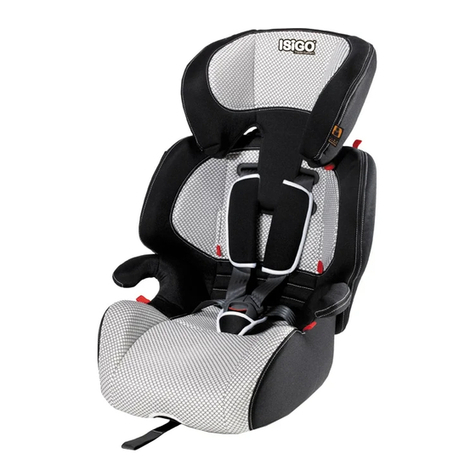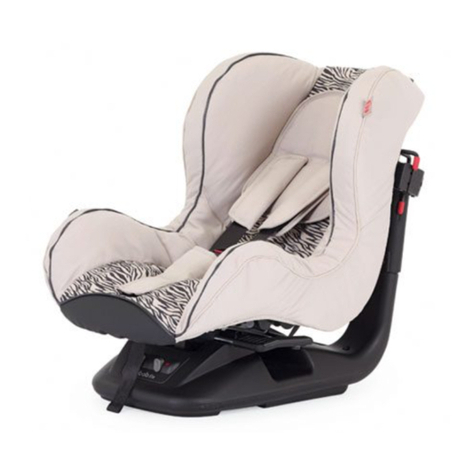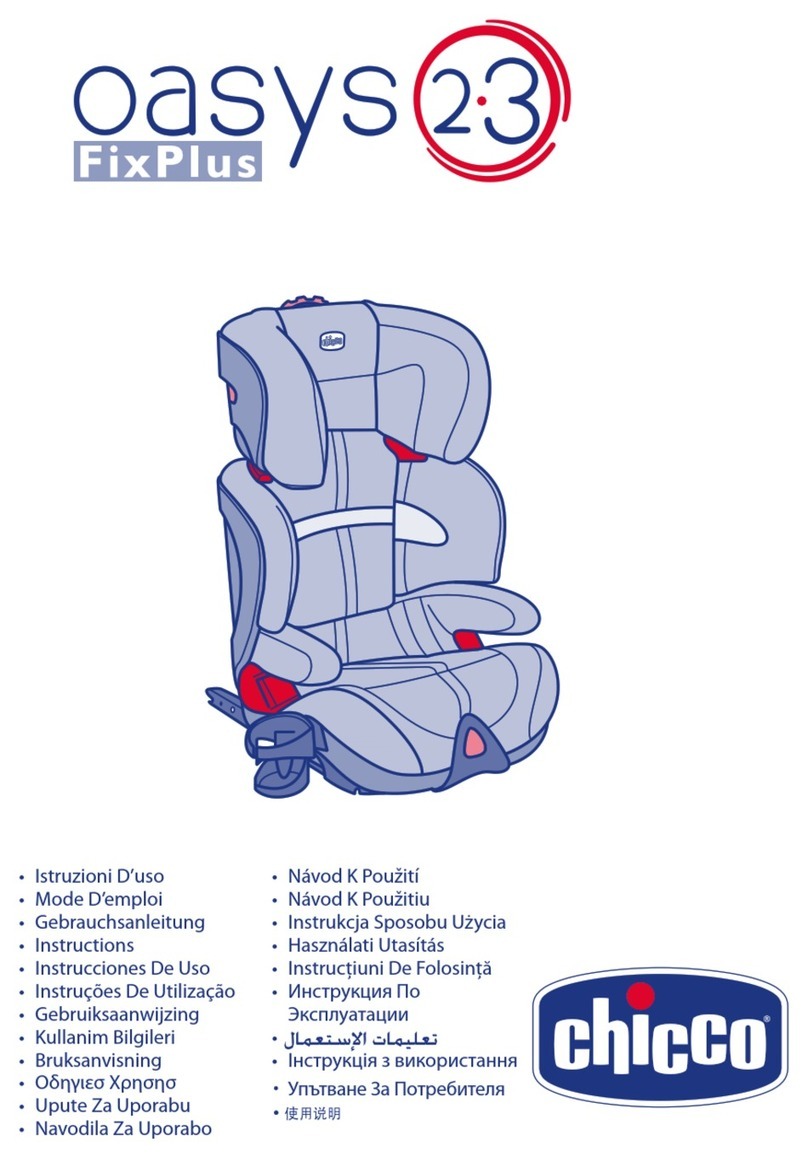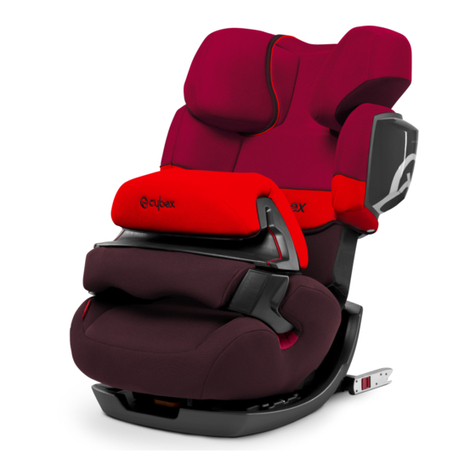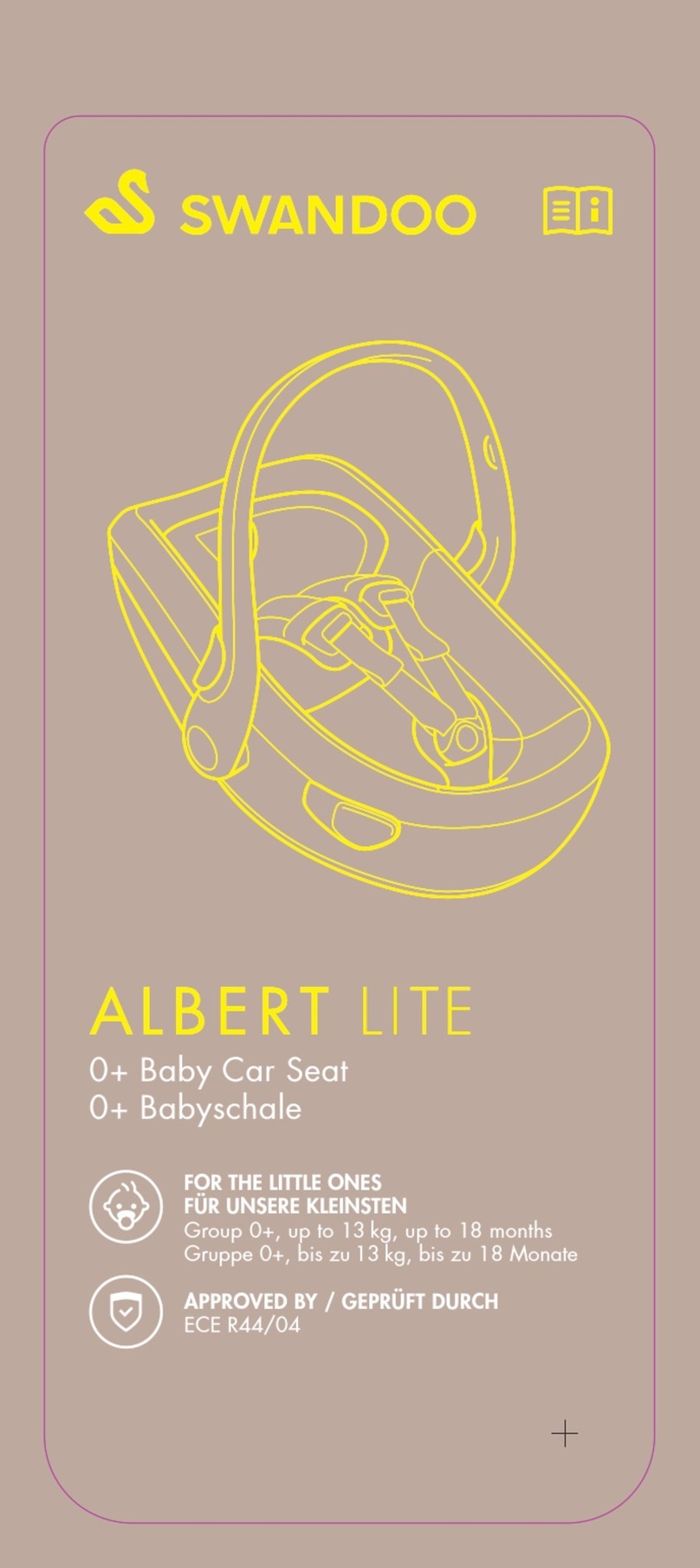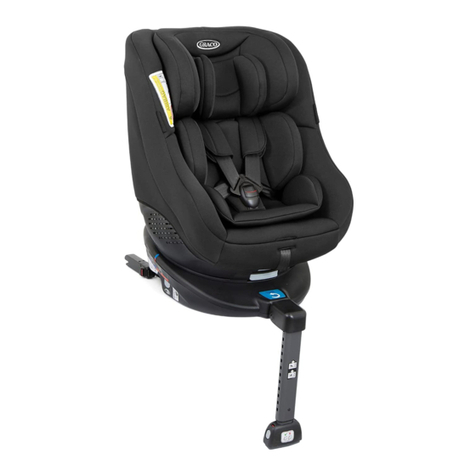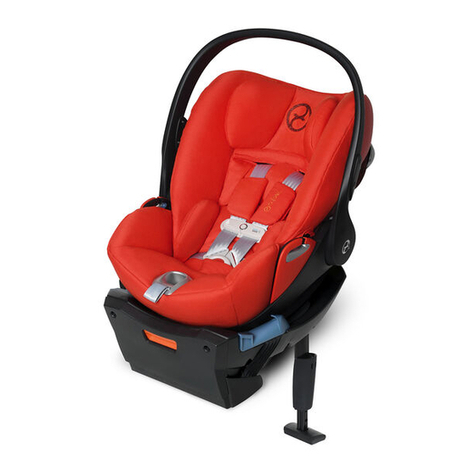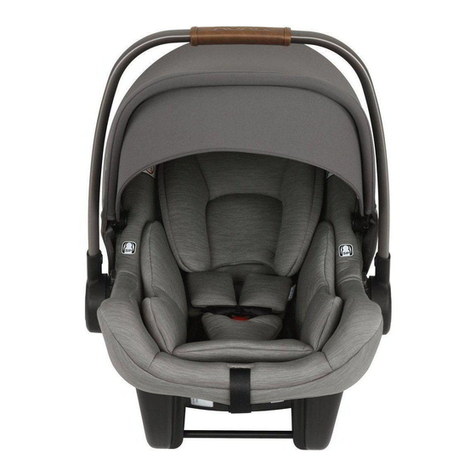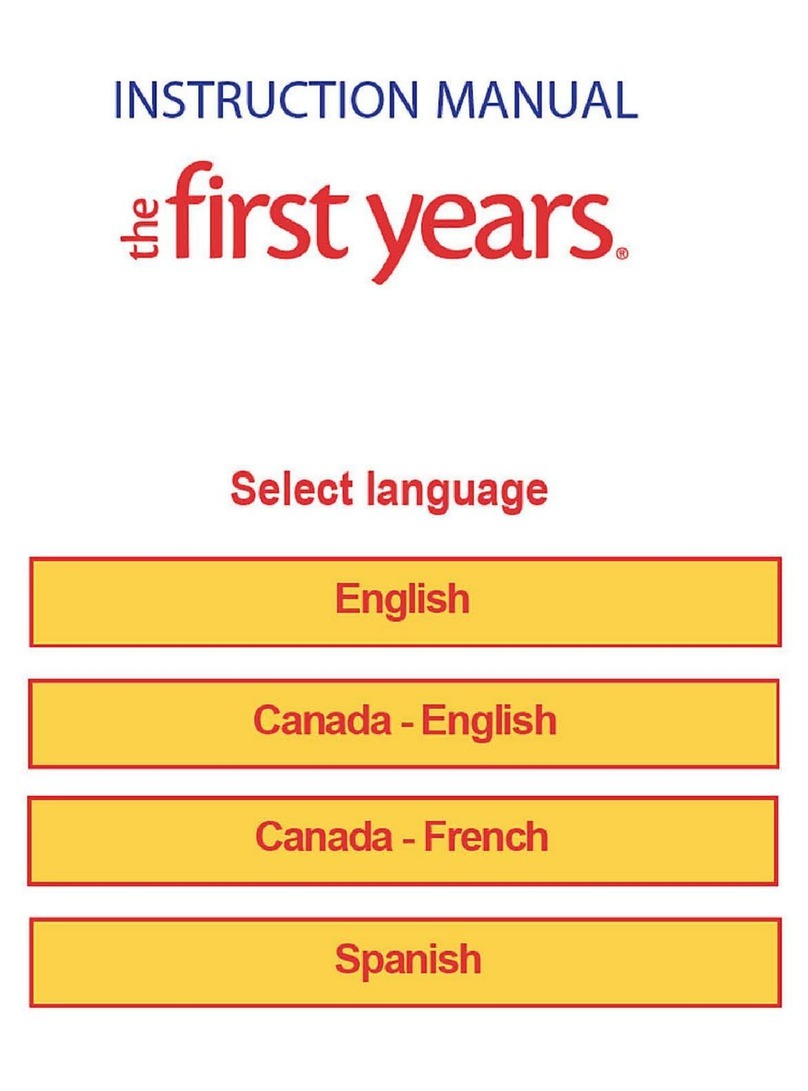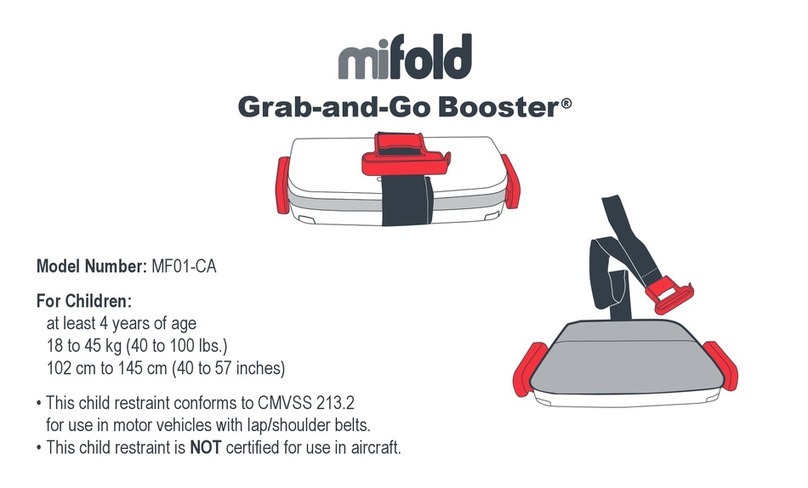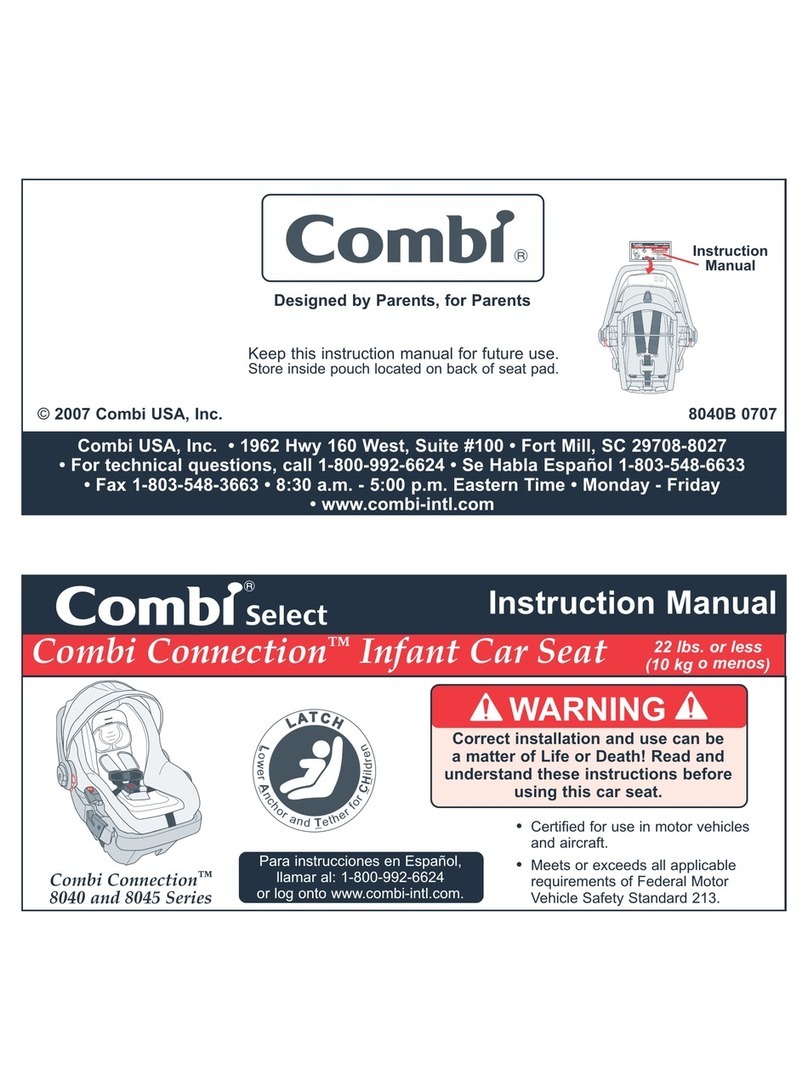BARREL
SECTION (1)
TOGGLE
SECTION (2)
LAP
SECTION
BUCKLE
(AND TONGUE)
Suitable for a child up to 9kg.
For dimensions of restraint when installed, see gure 3A below.
Normally this restraint is used in the rear seat but in certain vehicle types, e.g. sports cars/mini cars, etc, where the rear
seat is too small, the only possible position is the front passenger seat, adjusted as rearward as possible. The tether strap
must be attached to the anchorage point provided, and corresponding rear seating position should not be used. (An
extension strap may be required to reach the anchorage point certain instances). [Extension strap Part No. CCS003]
WARNINGS:
To ensure baby’s back is evenly supported, do not put more than one nappy on the baby and make
sure the nappy is not thickly folded at the back. DO NOT USE REAR FACING CHILD RESTRAINT WHERE
AN AIRBAG IS FITTED IN FRONT OF THE SEATING POSITION. Fit the restraint rmly to the car seat. Fit the
harness rmly to the child. A loose restraint or harness is dangerous. THIS TETHER STRAP MUST ALWAYS BE
FITTED WHEN THE CHILD RESTRAINT IS USED IN A VEHICLE. (see gure 4).
HOW TO INSTALL: INFANT POSITION (0-9 KG)
Step 1: At the front of your restraint is a red lever. Pull red lever
forward and slide seat forward as far as possible.
Step 2: Position restraint on vehicle seat. Ensure recline
section is swung forward (see gure 3A) and also that
the restraint is directly in line with anchorage point.
Step 3: Make sure upper anchorage strap (B) is as in
illustration (gure 4 and 4A - Page 4) i.e. positioned
around restraint back and along each side of the
restraint.
Step 4:
Step 5:
PROCEDURE FOR REARWARD FACING MODE
FRONT OF CAR
Red Recline
Lever
INSTALLED DIMENSION OF
RESTRAINT
660mm
Figure 3A
3
BELT PATH
TYPE A CHILD
RESTRAINT
Vehicle Seat
Passes Across
Here (L)
Recline Section
(B)
Figure 3C
NOTE: SOME MODELS MAY HAVE AN ADJUSTABLE HEADREST FITTED
(NOT AVAILABLE ON ALL MODELS)
Whilst holding the lap belt tight, by pulling up on sash
belt continously, place the red belt clamp on the sash
section of the vehicle belt at point (J) in Figure 3B.
Point J is as close to the buckle as possible. Refer
to gure 3C below for operation of the red clamp.
Feed adult lap or lap/sash belt around the
base/backrest of the restraint. Ensure the lap portion
only is position behind the ngers (L1 + L2). Engage
the buckle tongue assembly (A). Check it is properly
engaged. Tighten vehicle seat belt so sash and lap
belts are both tight.
(D)
(L2)
(J)
(A)
(L1)
Figure 3B of the base.
space is sufcient.
baby
always be used in the rearward facing
mode (infant position) as shown in gure
3A. i.e the plastic Recline Section is swung
forward so it is located underneath the front
The purchaser should check the meas-
urements between the front of the seat
back of the rear seat and all front seats in
the car in which the child restraint is
intended to be used, to ensure that the
Care and attention should be given to
sufcient ventilation and shading of the
IMPORTANT: Recline Section must
Step 1: Lengthen the harness in excess of what is needed before
placing the baby in the car seat. To lengthen the harness,
push the harness adjuster that is located at the front of the
seat (see gure 12) whilst grasping both shoulder harness
straps and pulling out till lengthened to the desired amount.
Ensure shoulder straps are pulled equally on each side.
Step 2: Place child in car seat with legs either side of the crotch strap,
place harness over the shoulders and hips and engage the
two buckle tongues (CLICK) into buckle. Check it is properly
engaged. Ensure child is placed centrally in the seat. If the
model has an adjustable headrest, adjust and lock into a
position that gives maximum head protection.
Step 3: Push the harness adjuster down to “deactivate it” and pull
harness adjuster strap to take the slack out of the shoulder
straps, until it is a rm but comfortable t. Ensure buckle is
adjusted centrally in relation to the child. Adjust if necessary.
To remove child from the restraint press the red harness buckle release
button which releases buckle tongues from the buckle. Move each
shoulder strap to the child’s side to allow easy access to the child.
Remove the child.
HOW TO USE FOR CHILD (8-18 KG) - Forward Facing Mode
ADJUSTING RECLINE ANGLE
IMPORTANT STEPS RE HARNESS ADJUSTMENT AND USE
CORRECT SHOULDER HEIGHT FOR FORWARD FACING MODE
The correct height for the shoulder straps is very important for the
optimum performance of the restraint. The shoulder straps must
be positioned no lower than 25mm below the top of the child’s
shoulders. If the harness straps are more than 25mm below the level
of the child’s shoulders then the child is too large for the restraint
and should not be used (see gure 13). The shoulder strap slots
used in forward facing position are the upper and middle positions.
Step 1: Turn the restraint so that the back of the seat is facing
you.
Step 2: Remove each shoulder harness through the gates in the
spreader plate (see gure 14).
Step 3: Pull the shoulder harness straps through the shoulder slot
holes in the seat body and cover. They are now loose in
the front of the seat.
Step 4: Push the ends of the shoulder harness straps through the
appropriate shoulder slot holes in the cover and seat body
for the child’s shoulder height. (see above for correct shoulder
height for forward facing, page 4 for rearward facing).
Step 5: The shoulder harness straps go directly from the shoulder
slot holes to the spreader plate. Thread each shoulder
harness strap back onto the metal spreader plate through
the gate (see Figure 14).
TO CHANGE THE SHOULDER SLOT HEIGHT
6
Front of vehicle
Figure 12
Figure 13
Figure 14
Crotch
strap
Buckle
Harness
adjuster
strap
Harness
adjuster
Shoulder
straps
Metal spreader
plate
Lower slots
Gates
Top slots
To adjust the recline angle, undo red clamp, loosen lap sash
section across base, adjust to require recline angle and tighten
vehicle belt as described in step 4. Install red belt clamp.






